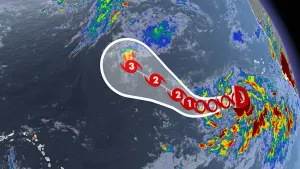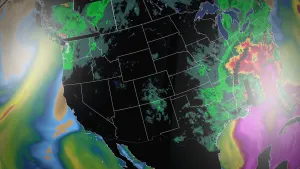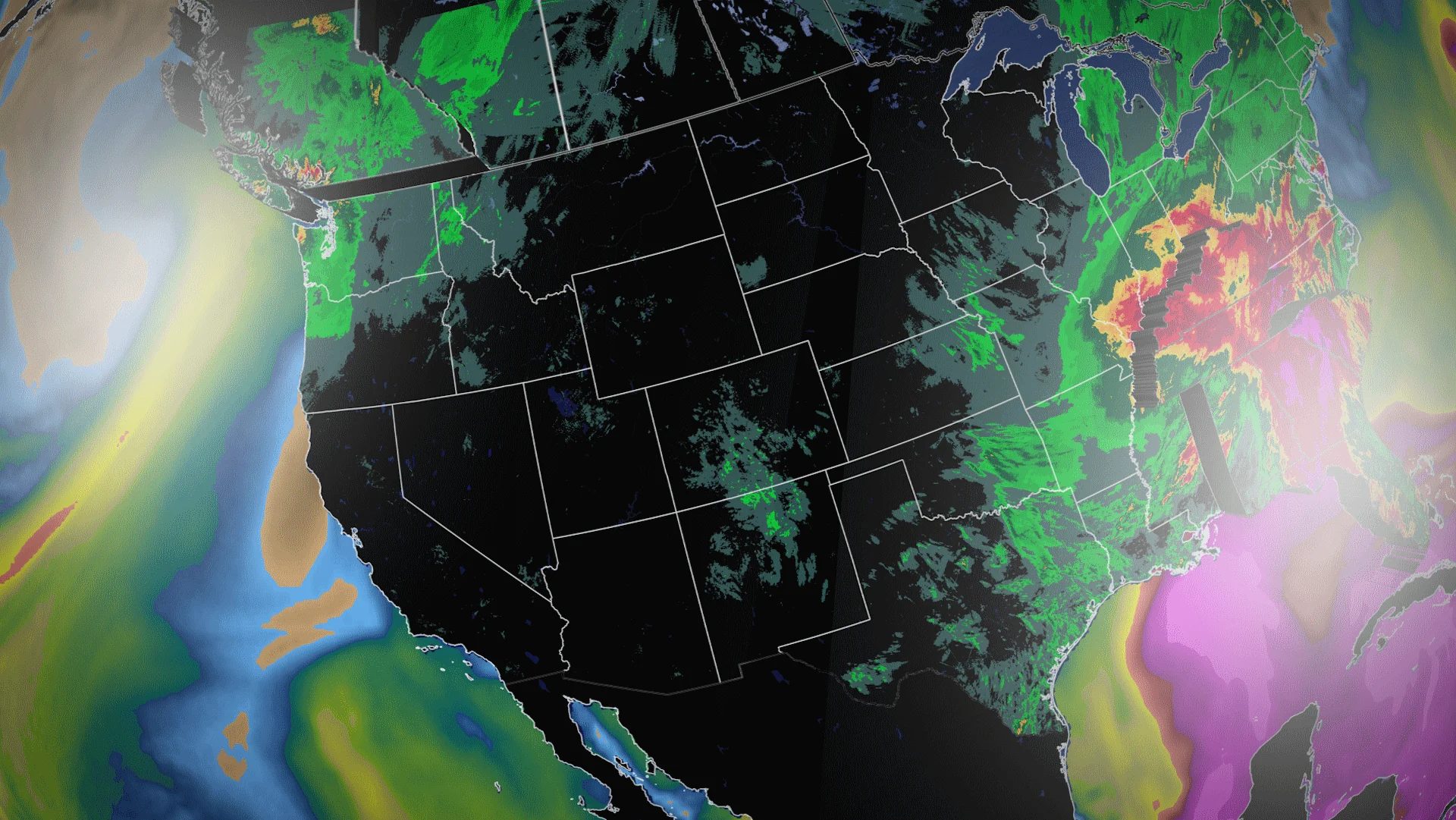
Hurricane Helene vs. B.C.'s 2021 atmospheric river—comparing devastating floods
Are the 2021 and 2024 events even remotely comparable, with one being a hurricane while the other was an atmospheric river bringing up moisture from Hawaii?
On Sept. 27, 2024, Hurricane Helene made landfall in the Florida Panhandle, but the biggest natural disaster would occur well inland, nestled in the southern Appalachian Mountains. A catastrophic flooding event unfolded across western North Carolina and Tennessee.
On Nov. 14, 2021, a massive atmospheric river slid across southern British Columbia, locking into place for 48 hours, severing highways and rail lines, and breaking rainfall records.
RELATED: How Hurricane Helene produced 700+ mm of rain in three days
Are the 2021 and 2024 events even remotely comparable, with one being a hurricane while the other was an atmospheric river bringing up moisture from Hawaii?
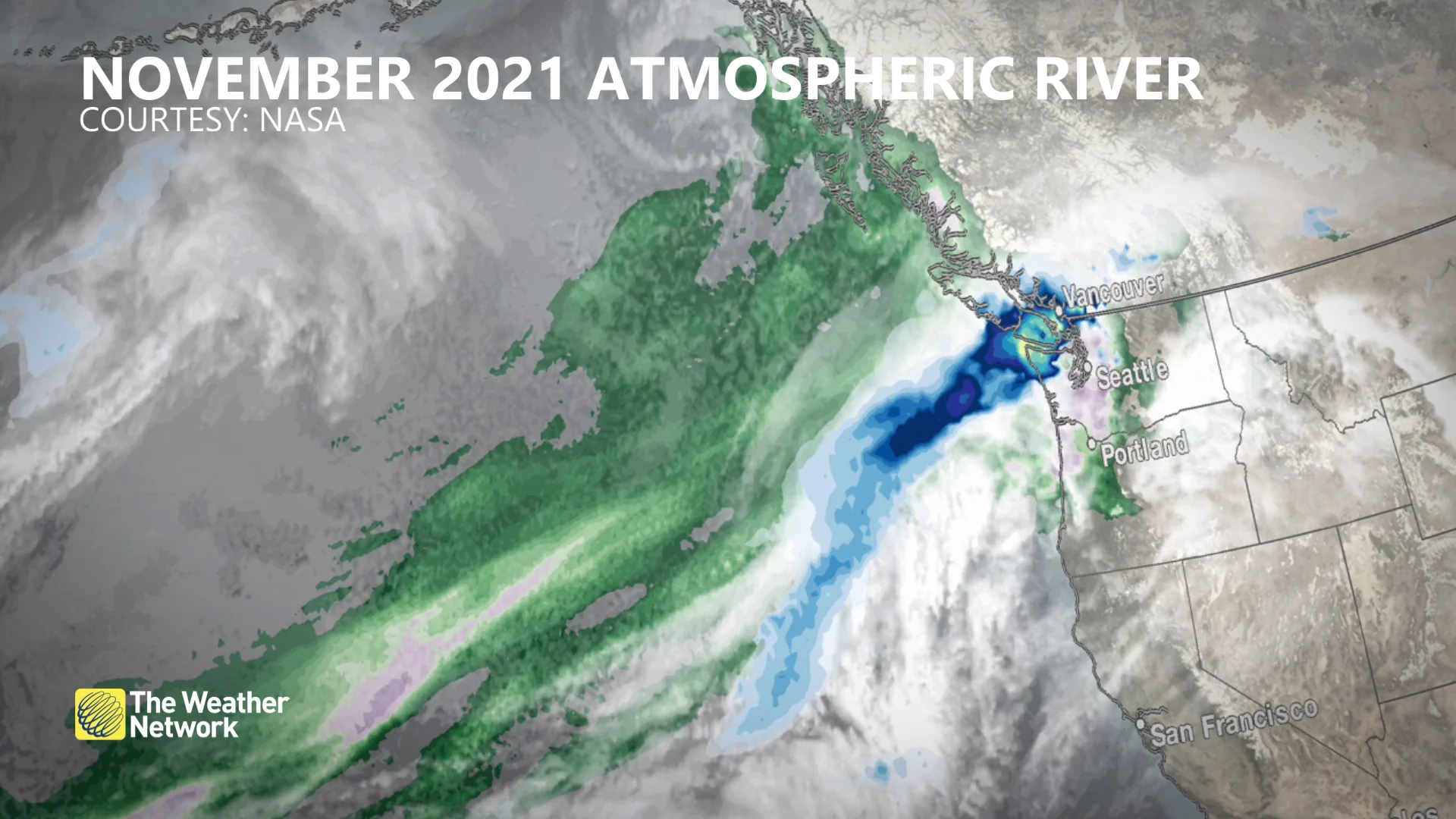
First, we’ll compare the amount of rainfall that each system dropped, but there’s even a more precise measurement to determine which system was more intense.
B.C., November 2021
There is a quantifiable way to measure the amount of moisture being transported in the atmosphere, and there’s a precise record of both events.
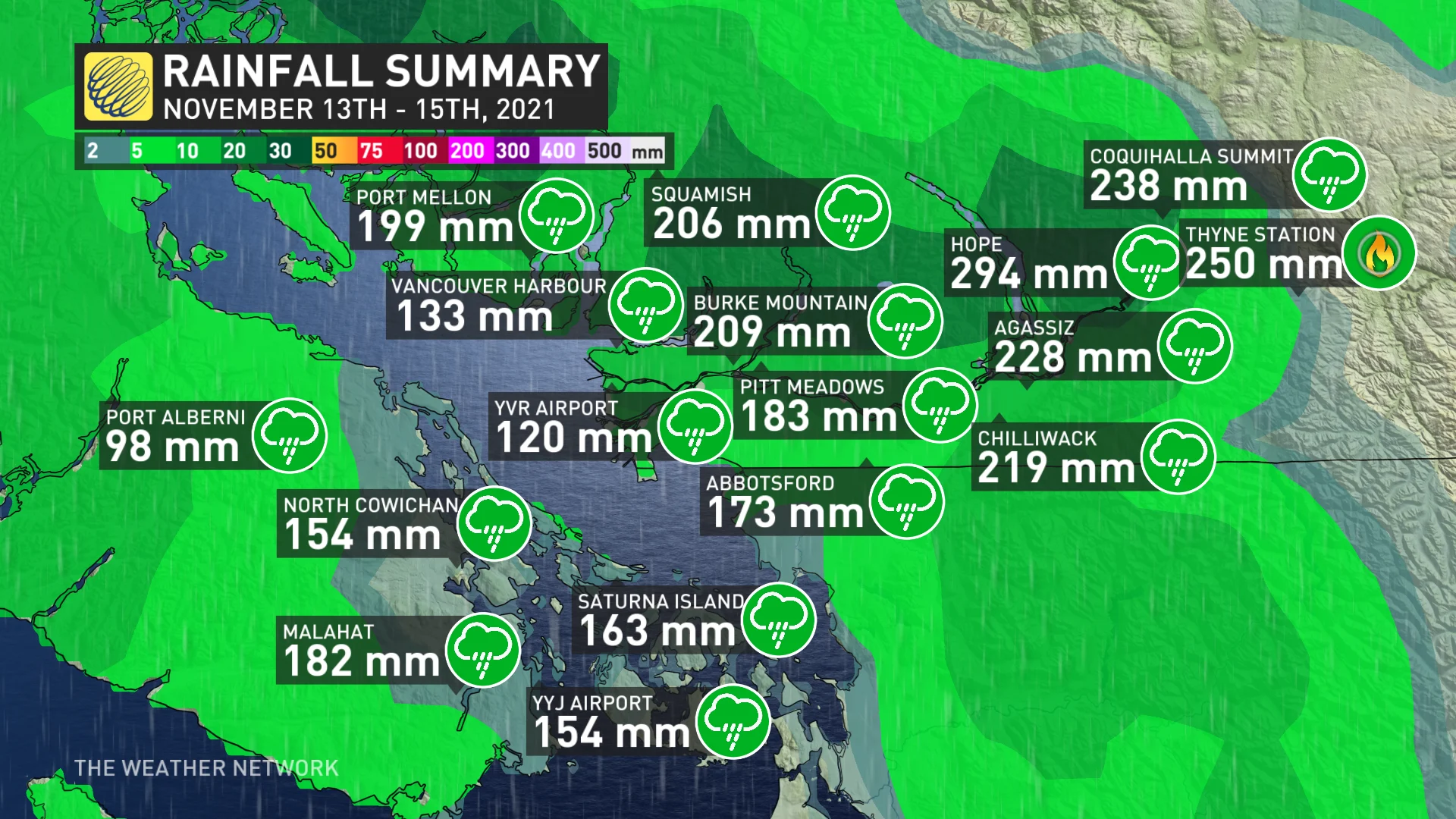
How moisture-laden was the 2021 atmospheric river at its peak? A standardized metric is the integrated vapour transport (IVT), the gold standard for measuring intensity.
The infamous November 2021 atmospheric river reached 1000 kg/m2 over land, incredibly rare for southern British Columbia.
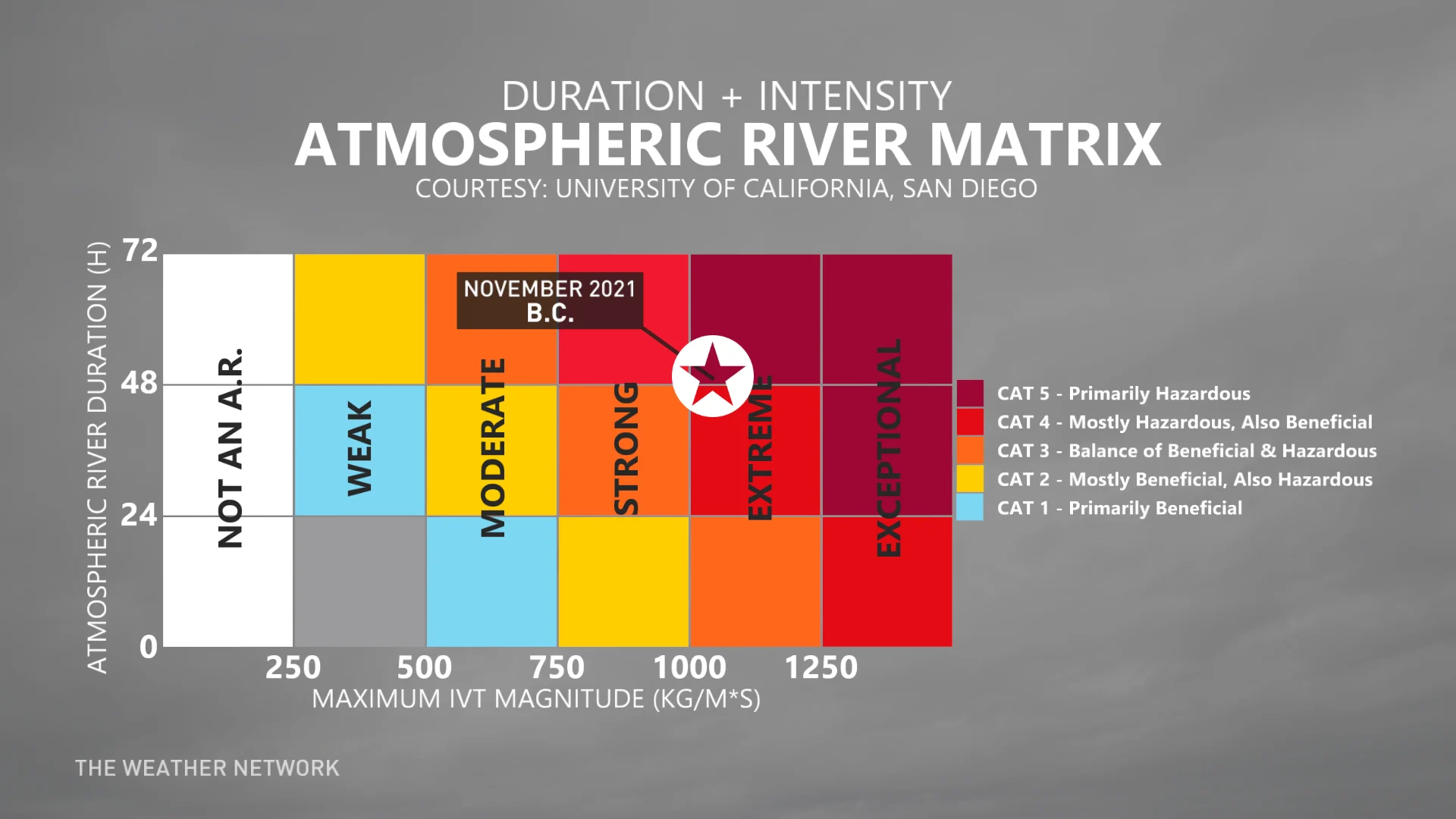
The destruction of events was amplified by steep terrain that unleashed severe flash flooding, but the amount of moisture carried inland by Helene was off-the-charts high.
Helene, September 2024
It’s nearly impossible to comprehend the level of destruction and human suffering that’s taking place with the extreme flooding produced by Hurricane Helene. Officially, the highest measurement is 751 mm of rainfall in Busick, N.C., located in the southern Appalachian region.
There’s no other way to say this, other than many roads in western North Carolina simply don’t exist anymore. Main interstates have collapsed, like I-40 and I-26, and in some ways, Helene is reminiscent of Hurricane Katrina.
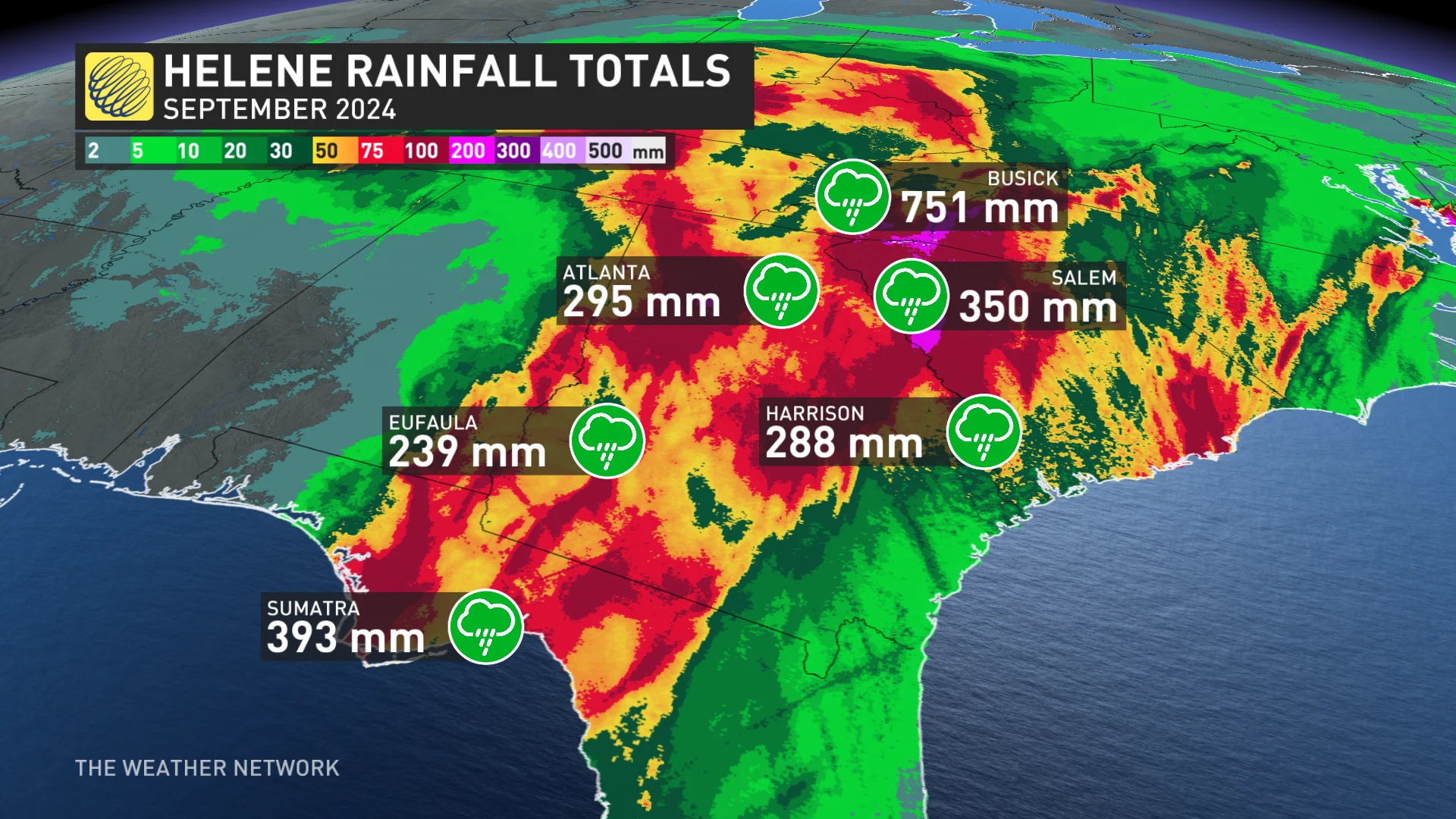
When you look at the same measurements used for British Columbia, the integrated vapour transport is literally off the charts. The moisture-infused core barrelled into the North Carolina mountains, bringing more than 3,000 IVT, a record for this part of the world. And, that was after a heavy band of rain set up ahead of Hurricane Helene, known as a predecessor rainfall event (PRE).
Keep in mind that these totals are the measurements officially received by the National Oceanic and Atmospheric Administration's (NOAA) Weather Prediction Center (WPC). A weather observer in Jonas Ridge reported 928 mm, which would break the North Carolina state record of 913 mm with Hurricane Florence in 2018. Those numbers are well above the 200 per cent of rainfall that B.C. received in the same time period.

As devastating as the 2021 British Columbia floods were, a weather event of this magnitude is hardly even comparable.
The full scale of this weather disaster will continue to emerge during the days to come. The catastrophic flooding will likely take years to clean up in the worst-hit regions of eastern Tennessee and western North Carolina. Some locations might not even rebuild at all.








